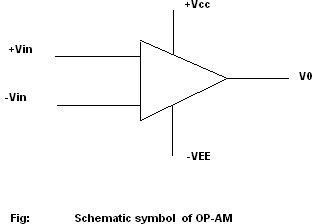Operational Amplifier Theory Explored
Introduction
We have been reading about amplifiers and types of amplifier circuits commonly used in the field of electrical and electronics industry. We know from our previous study that basically an amplifier is used to amplify a weak signal so that it can be put to some specific use. An operational amplifier is a special kind of amplifier and in this article will give the readers a brief overview of an operational amplifier theory and about its characteristics for an ideal case.
What does an op-amp do?
A computer or any electronic device such as your calculator that carries out simple mathematical operations needs special kind of circuitry which can be used to perform these operations. The operational amplifier abbreviated as Op-Amp is an amplifier circuit that is used to perform mathematical operations like
- addition
- subtraction
- integration
- derivation
Its response is linear for current and voltage with a high (theoretically infinity) dc output gain. Op-amp uses a network of resistors and capacitor to perform different operations.
They are configured first for a particular operation. Op-amp was originally designed with discrete chips before integrated package was available. They provide a versatile circuit for the analog computers.
Op-amp has following 5 different stages. The name and function of each of these stages is important for the efficient performance of the op-amp. All these stages and their functions have been listed as follows.
- High Gain stage: This stage provides a high amplification for the weak signal
- Differential stage: This stage has two inputs. This stage provides a better immunity to noise
- Intermediate stage: This stage provides further amplification to signal if it is still weak
- Level shifter: This stage provides a desired shift in voltage keeping in view the output interface
- Push Pull: This stage provides a better impedance match, necessary to drive the output load perfectly
Output signal in Op-amp is single ended (ref to ground), so the signal can swing in both negative and positive directions. Both supplies are of opposite polarities but having same magnitude. To cause the signal to move in both directions both negative and positive power supply are required. Some specialized op-am circuit is designed to uses only one power supply.
Schematic symbol for Op-amp is triangular shaped shown in figure below with inputs designated as (+v) and (-v).The positive end is normally referred to as non inverting input and negative end as inverting input.
Characteristics (Ideal case):
An ideal case situation presents the best possible case for any device and the following conditions list the ideal characteristics of an op-amp. Of course a real op-amp is not having such performance but the designers tend to make it as close to the ideal situation as possible
- Op-amp has high output gain (theoretically infinity) gain.
- Op-amp has High input impedance.
- Op-amp has Low output impedance.
- Op-amp DC output is zero when input is zero.
- Op-amp has zero common mode gain.
- Band width of an Op-amp is infinite.
Of course this is just a brief and general overview of the op-amp and there are lots of things to be studied in relational to the operational amplifier. We will take up these different topics in our later articles, so just keep a look out.
